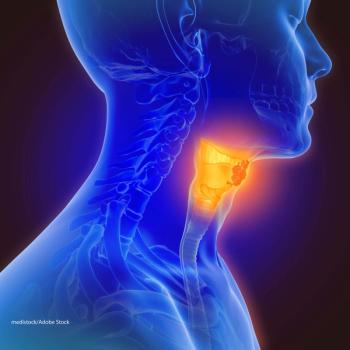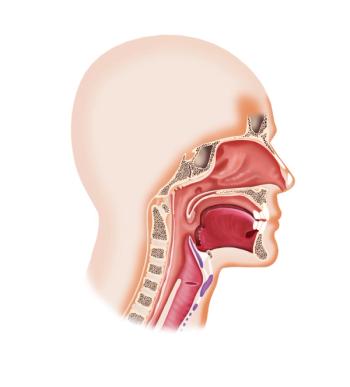
Surveillance Compliance Improves Head and Neck Cancer Survival
A new study found that compliance with post-treatment clinical surveillance improved survival outcomes in patients with head and neck squamous cell carcinoma.
A new study found that compliance with post-treatment clinical surveillance improved survival outcomes in patients with head and neck squamous cell carcinoma, according to a new study
Other factors that impacted survival, according to the study, were patient income level and distance traveled for surveillance.
Prior studies have identified post-therapy surveillance as a major factor in survival outcomes for patients with head and neck cancers. Head and neck cancer patients have a relatively high recurrence rate but when patients are actively monitored for potential recurrence, about half of recurrences and more than half of secondary tumors can be identified and treated, according to the results of a previous study. Based on this prior work, researchers have emphasized the importance of follow-up patient care after initial surgery, radiation therapy, or chemotherapy. The assumption is that the 5-year survival rate of 50% can be increased if most patients are assessed regularly for recurrence following therapy.
Currently, the National Comprehensive Cancer Network guidelines recommend that head and neck cancer patients come in for checkups every 1 to 3 months in the first year following initial surgery and/or therapy and every 2 to 4 months at 2 years. After 3 to 5 years following therapy, patients should be assessed every 4 to 6 months, and annually in subsequent years if no cancer is detected.
In the current study, Michael W. Deutschmann, MD, of the department of otolaryngology–head and neck surgery at the University of Kansas Medical Center in Kansas City, Kansas, and colleagues analyzed the impact of this post-therapy surveillance and that of other factors on head and neck cancer patient survival.
Advanced disease, middle and moderate income level census tracts, and age were all significantly associated with an increased risk of death.
Those patients who quit smoking, lived in high income census tracts, and lived closer to their treatment centers were more likely to keep their follow-up surveillance appointments. The association between compliance and tobacco cessation (P = .003) and the distance the patient lived from their follow-up physician (P = .008) were statistically significant.
Compliance for follow-up visits was not significantly related to sex, race, tumor stage, income level, or patient age.
Deutschmann and coauthors retrospectively analyzed a cohort of 332 patients with head and neck squamous cell carcinoma who were treated at a tertiary academic center and had completed both treatment and follow-up at the University of Kansas Medical Center. Information on patients’ tumors, their socioeconomic status, and geographical data were obtained to assess which factors were associated with patient survival.
Mean overall patient follow-up timing was 45 months. Patients in the cohort were diagnosed with cancer in the oral cavity (37%), larynx (29%), and the oropharynx (28%). Seventy-four percent of the patients presented with advanced disease. Patients were treated with surgery alone (20%), radiation therapy alone (3%), surgery plus radiation therapy (20%), chemoradiation (32%), or surgery plus chemoradiation (26%). Sixty-four percent of the patients did not develop recurrence.
Sixty percent of the patients lived within 50 miles of their treatment center and 7% lived more than 200 miles away. Forty-nine percent of patients did not miss any of their follow-up surveillance visits, while 30% had missed three or more appointments and were considered non-compliant.
“Thus far, we have established that patients should be considered as high risk if they have incomplete post-treatment surveillance, continue to use tobacco after treatment, live in middle or moderate income census tracts, or live more than 200 miles from the treatment center,” concluded the study authors.
Newsletter
Stay up to date on recent advances in the multidisciplinary approach to cancer.
































































































